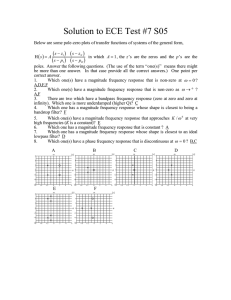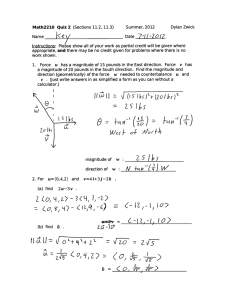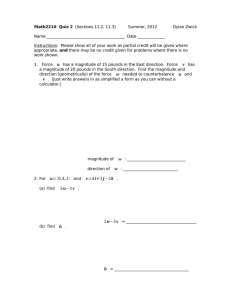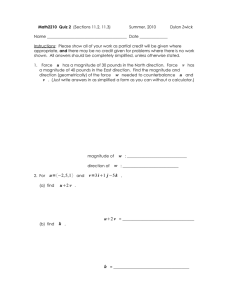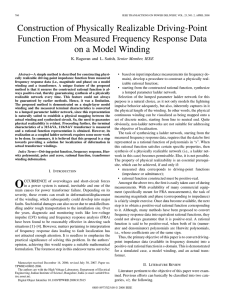Solution of ECE 316 Test #9 S04
advertisement
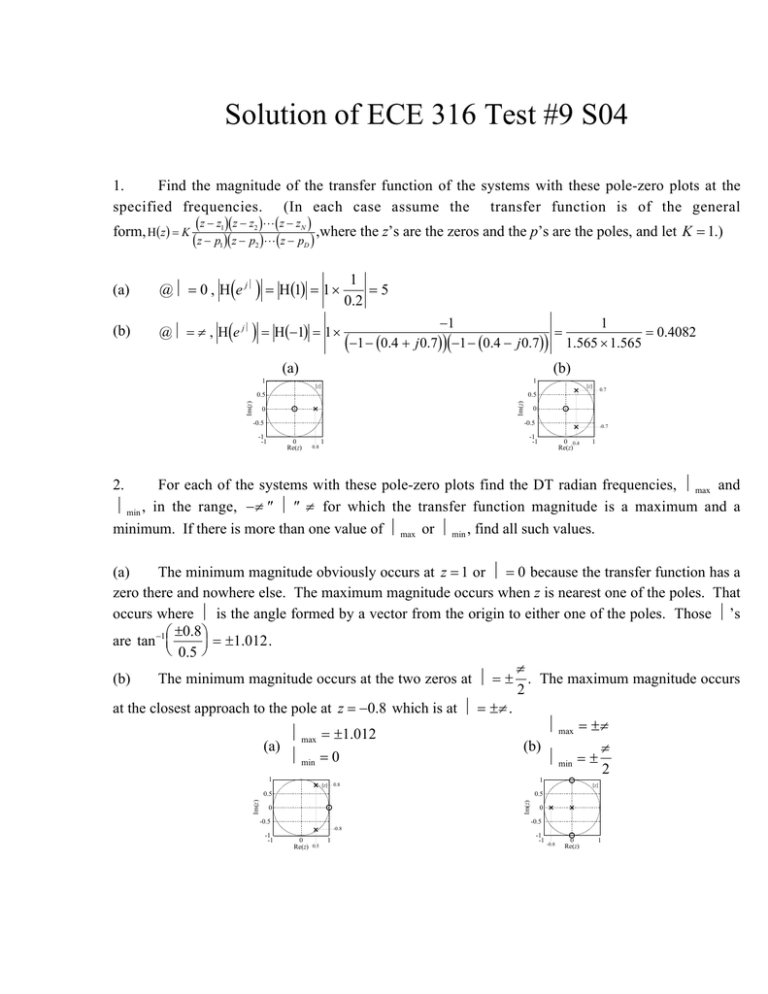
Solution of ECE 316 Test #9 S04 1. Find the magnitude of the transfer function of the systems with these pole-zero plots at the specified frequencies. (In each case assume the transfer function is of the general form, H(z) = K (z − z1)(z − z2 )L(z − zN ) ,where the z’s are the zeros and the p’s are the poles, and let K = 1.) (z − p1)(z − p2 )L(z − pD ) (a) @ Ω = 0 , H(e jΩ ) = H(1) = 1 × 1 =5 0.2 (b) @ Ω = π , H(e jΩ ) = H(−1) = 1 × −1 1 = = 0.4082 (−1 − (0.4 + j 0.7))(−1 − (0.4 − j 0.7)) 1.565 × 1.565 (a) (b) 1 1 0.7 0.5 Im(z) 0.5 Im(z) [z] [z] 0 0 -0.5 -0.5 -1 -1 0 Re(z) 0.8 -0.7 -1 -1 1 0 0.4 Re(z) 1 2. For each of the systems with these pole-zero plots find the DT radian frequencies, Ωmax and Ωmin , in the range, −π ≤ Ω ≤ π for which the transfer function magnitude is a maximum and a minimum. If there is more than one value of Ωmax or Ωmin , find all such values. (a) The minimum magnitude obviously occurs at z = 1 or Ω = 0 because the transfer function has a zero there and nowhere else. The maximum magnitude occurs when z is nearest one of the poles. That occurs where Ω is the angle formed by a vector from the origin to either one of the poles. Those Ω’s ±0.8 are tan −1 = ±1.012 . 0.5 π (b) The minimum magnitude occurs at the two zeros at Ω = ± . The maximum magnitude occurs 2 at the closest approach to the pole at z = −0.8 which is at Ω = ±π . Ωmax = ±π Ωmax = ±1.012 (a) (b) π Ωmin = 0 Ωmin = ± 2 1 [z] 1 0.8 [z] 0.5 Im(z) Im(z) 0.5 0 -0.5 0 -0.5 -0.8 -1 -1 0 Re(z) 1 0.5 -1 -1 -0.8 0 Re(z) 1



